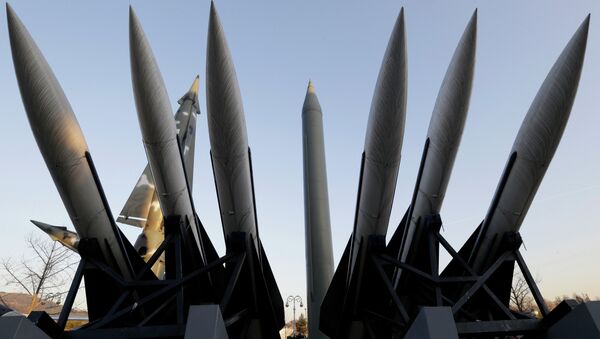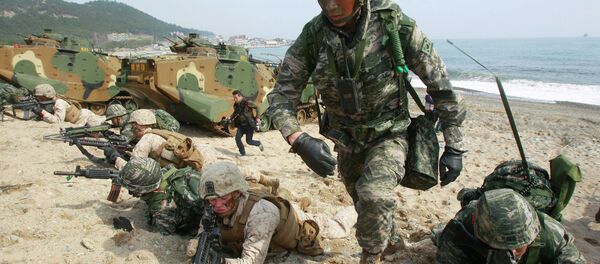Seoul's Defense Ministry statement has come as a response to a report released by the US-Korea Institute Tuesday. American and South Korean experts proposed three scenarios for Pyongyang's nuclear development program, predicting that the country's stockpile would increase to 100 nuclear devices by 2020. Joel Wit, the report's co-author, noted that miniaturization technology would allow North Korea to boost its nuclear arsenal and equip its intermediate and shorter-range ballistic missiles with nuclear warheads. According to the expert's estimates, Pyongyang has already built from 10-16 plutonium and uranium based nuclear weapons.
However, on Thursday, Seoul's Defense Ministry, which can hardly be suspected of harboring any sympathy for North Korea, voiced its doubts regarding Pyongyang's capability to produce miniaturized nuclear warheads. Denouncing Joel Wit's data on the current size of Pyongyang's nuclear arsenal as a "presumption without any evidence," ministry spokesman Kim Min-seok stated that there are no signs showing that North Korea can build nuclear-tipped missiles. Although the communist nation has reached a significant technological level, it has not yet demonstrated miniaturization capabilities," the spokesman said according to South Korean media sources.
When asked about the Pyongyang's forthcoming nuclear test, Kim Min-seok noted there was no evidence that North Korea had any such plans. Remarkably, earlier that day one of South Korea's media sources speculated that Pyongyang was going to carry out its fourth round of nuclear tests in May, 2015. The ministry spokesperson warned that North Korea's attempts to conduct new detonation tests would inevitably aggravate further tensions on the peninsula. Pyongyang has already carried out three rounds of nuclear tests in 2006, 2009 and 2013.




